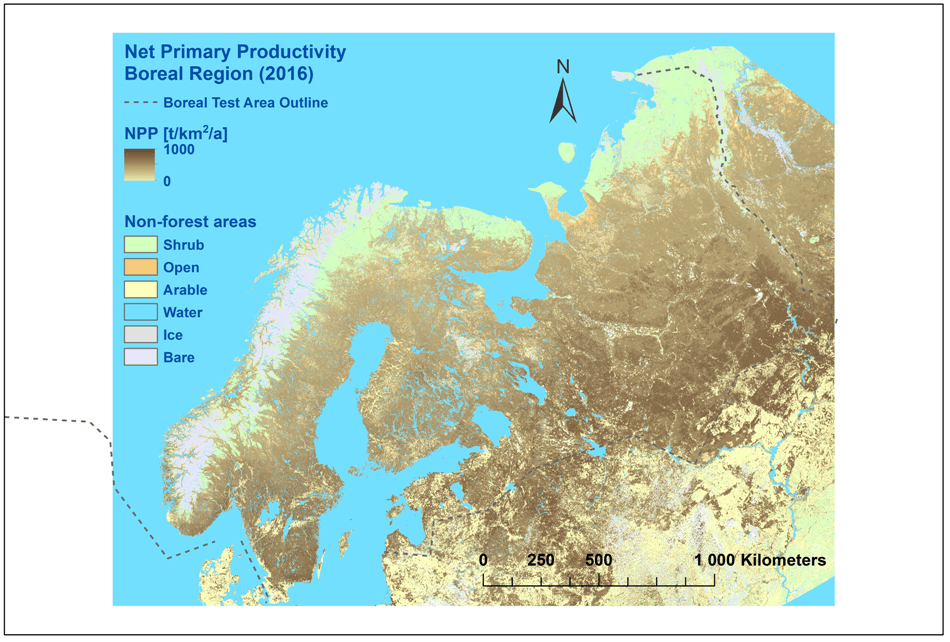Jan 24 2019
The EU-funded Forest Flux project, which commenced in 2018, is coordinated by VTT. The project sets up commercial services for estimating forest carbon storage and absorption.
 Net Primary Production estimate of forest from the previous EU project North State. (Image credit: VTT, University of Helsinki)
Net Primary Production estimate of forest from the previous EU project North State. (Image credit: VTT, University of Helsinki)
The services rely on the computerized interpretation of satellite data obtained by the Sentinel-2 satellite, part of the European Copernicus Programme. NGOs, forest companies, and authorities are the customers of the global service.
The satellite data is enhanced into map products, which depict the carbon assimilation and forest biomass, with the help of a cloud-based service platform maintained by VTT. The ground data that enables the estimation of the reliability of computed maps supports the interpretation. In addition, the cloud service allows the products to be disseminated to the customers. Since the images are readily available in the cloud service, the service users do not need to transfer large amounts of data. The customers can quickly download the final data since it is offered in a format that does not need much storage space.
This is a whole new product, since this kind of service entity being developed in the Forest Flux, with its computing platform and map products, has not been available before. The forest inventory and carbon data provided by the service can be integrated into the decision-making processes of selected users. The web-based services are also provided to customers without any geographic restrictions.
Tuomas Häme, Research Professor, VTT
Tuomas Häme also serves as project coordinator.
Every five days, the Sentinel-2 satellites collect data on the same area of the Earth, thereby ensuring the provision of a cloudless image of the majority of areas on the Earth every year, including Finland. As a result, it is possible to calculate the carbon estimations on a yearly basis. The European Space Agency (ESA) offers an image resolution of 10 m to the project.
The analysis techniques being employed in Forest Flux are based on an earlier EU project, North State led by VTT. Apart from VTT, the University of Helsinki, Simosol Oy, UNIQUE Forestry and Land Use GmbH (Germany), Instituto Superior de Agronomia (Portugal), and Institutul Naţional de Cercetare-Dezvoltare în Silvicultură “Marin Drăcea” (Romania) are the other members of the Forest Flux consortium. The project’s total budget is slightly more than two million euros.
VTT is also involved in the groundwork of a project which intends to offer tools based on the forest inventory and carbon estimations on the basis of satellite data free of charge. The cloud service platform used in Forest Flux is employed in this project as well.